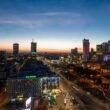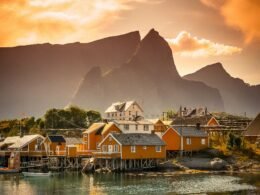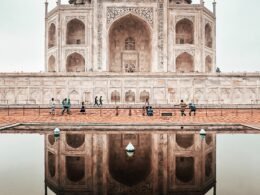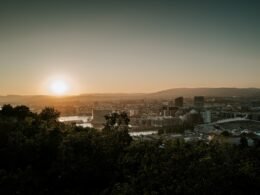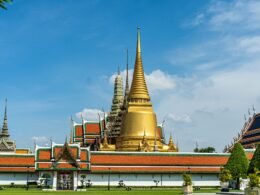Let’s be honest, there’s no bad time to visit Japan… But, depending on what you’re looking for, certain times of the year might be better suited to your needs, wants, and budget!
We’ve done all the research and asked all the right people, so buckle up, as we’re going to be doing a deep dive into the best time to visit Japan.
The spring high season (April – May)
If you’re familiar with Japan, you’ll know that spring is a peak travel season for tourists and locals. As spring arrives, the country transforms into a sea of pink as Japan’s iconic cherry trees burst into bloom. Experiencing Japan’s cherry blossoms (or “sakura”) is truly breathtaking, but be prepared for higher prices and large crowds. Golden Week (a series of Japanese holidays) also takes place from late April to early May, making it an especially busy time.
April
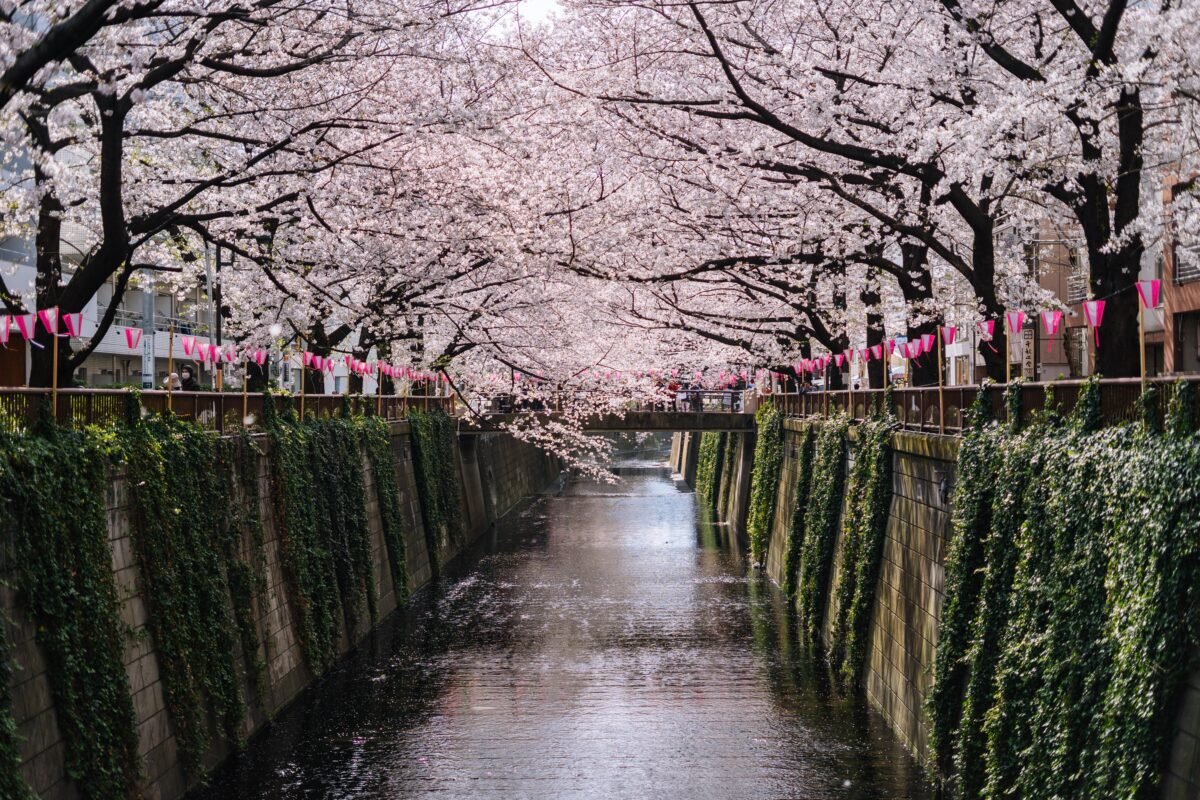
The weather in April is pleasant. In Tokyo, average temperatures are between 10°C and 19°c with roughly four inches of rainfall. It’s considered by many as the best time to visit Japan, as the sakura normally blooms from late March to mid-April. The most famous places to view the cherry blossoms are Himeji Castle, Fuji Five Lakes, Hirosaki Castle, Tokyo, and Kyoto.
During the cherry blossom season, you can enjoy “hanami”, a huge part of Japanese spring culture. Hanami means “flower viewing” and traditionally families, friends, and colleagues gather under the cherry trees to enjoy a picnic. During the evening, the trees are lit up beautifully with lanterns and lights. This evening flower viewing is known as “yozakura”.
Spring is also a time to enjoy seasonal treats. During spring, Japanese strawberries are in season and many hotels offer strawberry dessert buffets. You’ll also be able to find sakura desserts and sweets such as sakura mochi, sakura kitkat, and sakura lattes.
Don’t miss out on: hanami/yozakura, strawberry picking, and Tokyo Disney Easter.
May

During May, temperatures climb higher with averages between 14°C and 21°C in Tokyo, with roughly six inches of rainfall. If you’re sad you’ve missed out on Japan’s famed cherry blossoms, don’t fret, as you still may be to see some late-blooming sakura in the north of the country!
Otherwise, there are plenty of chances to see other flowers throughout the month. The wisteria in Kawachi Fujien Garden in Fukuoka is an extremely popular tourist spot, as is the Ashikaga Flower Park near Toyko. To see the ground carpeted in vibrant pink moss, stop by the Fuji Shibazakura Festival. Or for some breathtaking blue flowers, the Hitachi Seaside Park gets blanketed in roughly 4.5 million nemophila until mid-May.
As summer approaches, greenery begins to re-emerge in the Japanese mountains, making May a good time for hiking, camping, and kayaking. It’s also the best month to visit a tea plantation. We recommend the Imamiya Tea Plantation, a stunning plantation with rows of lush green tea plants and Mount Fuji looming in the background.
Don’t miss out on: May Grand Sumo Tournament and seasonal matcha-flavoured desserts.
The fall high season (August – November)
After spring, the next most popular time to visit Japan is in the fall. As summer comes to an end, the Japanese landscape gets taken over by vivid autumnal colours, and both tourists and locals flock to popular spots to admire the beautiful fall foliage.
August
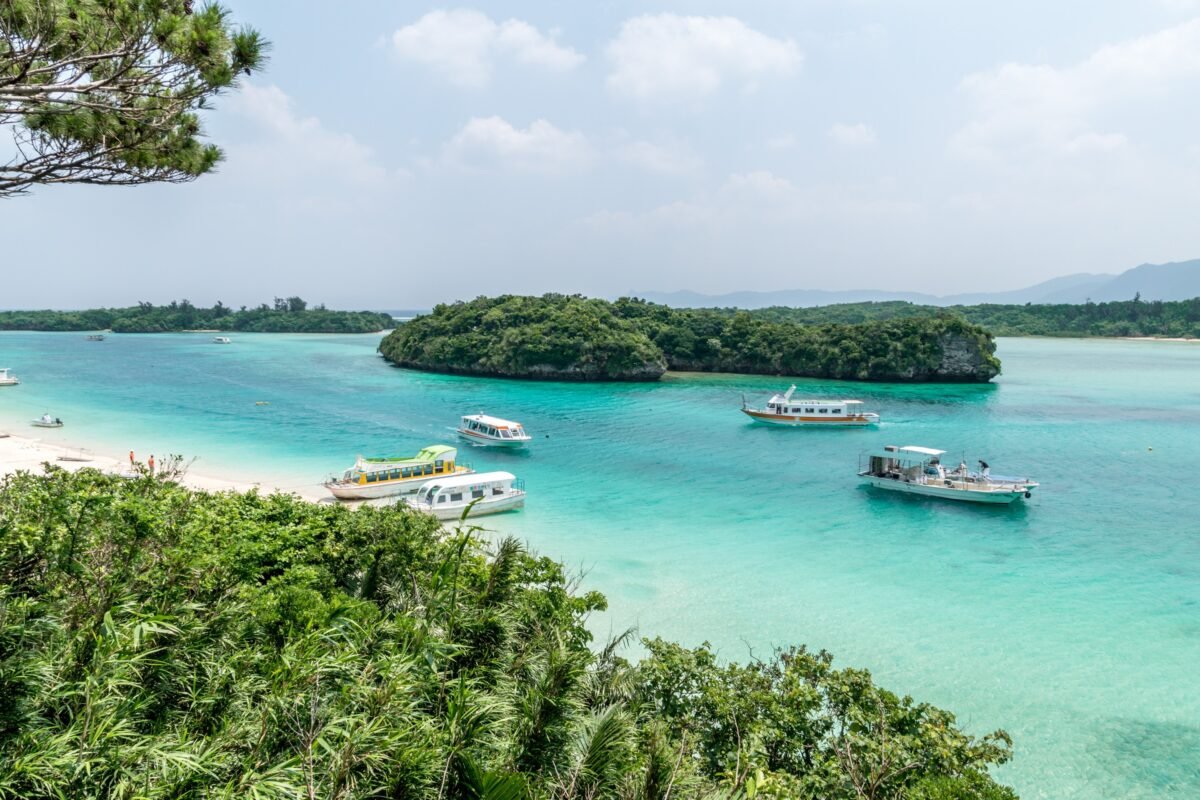
August brings with it hot and humid weather, with average temperatures of between 18°C and 31°C across the central and southern prefectures. There are roughly seven inches of rainfall with the occasional typhoon. In mid-August, the Japanese celebrate Obon, the festival of the dead and one of the country’s biggest celebrations (be prepared for large crowds and hiked-up prices).
If you’re a beach bum, then August is a great time to head to Okinawa where you can enjoy white-sand beaches, warm tropical waters, and scuba diving – just keep an eye out on the weather forecast for any incoming typhoons!
For those in Tokyo, summertime is synonymous with beer gardens, and there are numerous across the city. Many beer gardens have all-you-can-eat and drink packages, lasting around two hours. We love the beer garden at the Tokyo Prince Hotel.
Don’t miss out on: Awa Dance Festival, Aomori Nebuta Festival, and numerous fireworks festivals.
September
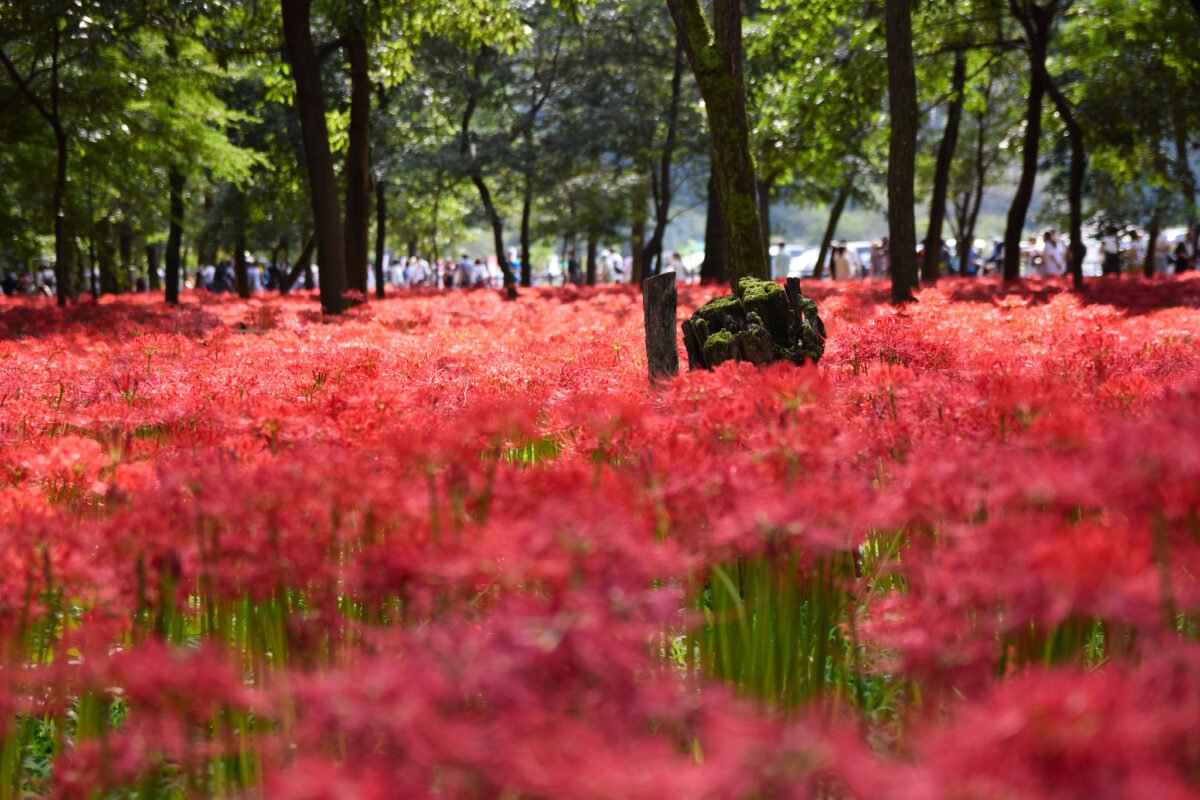
September continues to be hot, with average temperatures between 16°C and 30°C, and roughly six inches of rain. Although it’s stil ltechnically summer, fall is beginning to creep in. So, if you head north to Hokkaido from mid-September, you’ll be able to see the first of the autumn leaves!
During September, there are numerous festivals and events, from the Tokyo Wagyu festival to the Tsukimi Moon Viewing Festival. The moon viewing festival marks the coming of autumn and usually happens in mid-September (according to the lunar calendar). The Tokyo Tower, Tokyo Skytree, and Sankeien garden in Yokohoma are all popular places to view the full moon. Don’t forget to try some seasonal moon-viewing treats like rabbit-shaped mochi, tsukimi dango, and chestnuts.
Some other September must-sees are the red spider lilies at the Kinchakua Higanbana Fields and the cosmos flower fields near Mount Fuji.
Don’t miss out on: the September Grand Sumo Tournament and the beginning of the Halloween celebrations at Universal Studios.
October
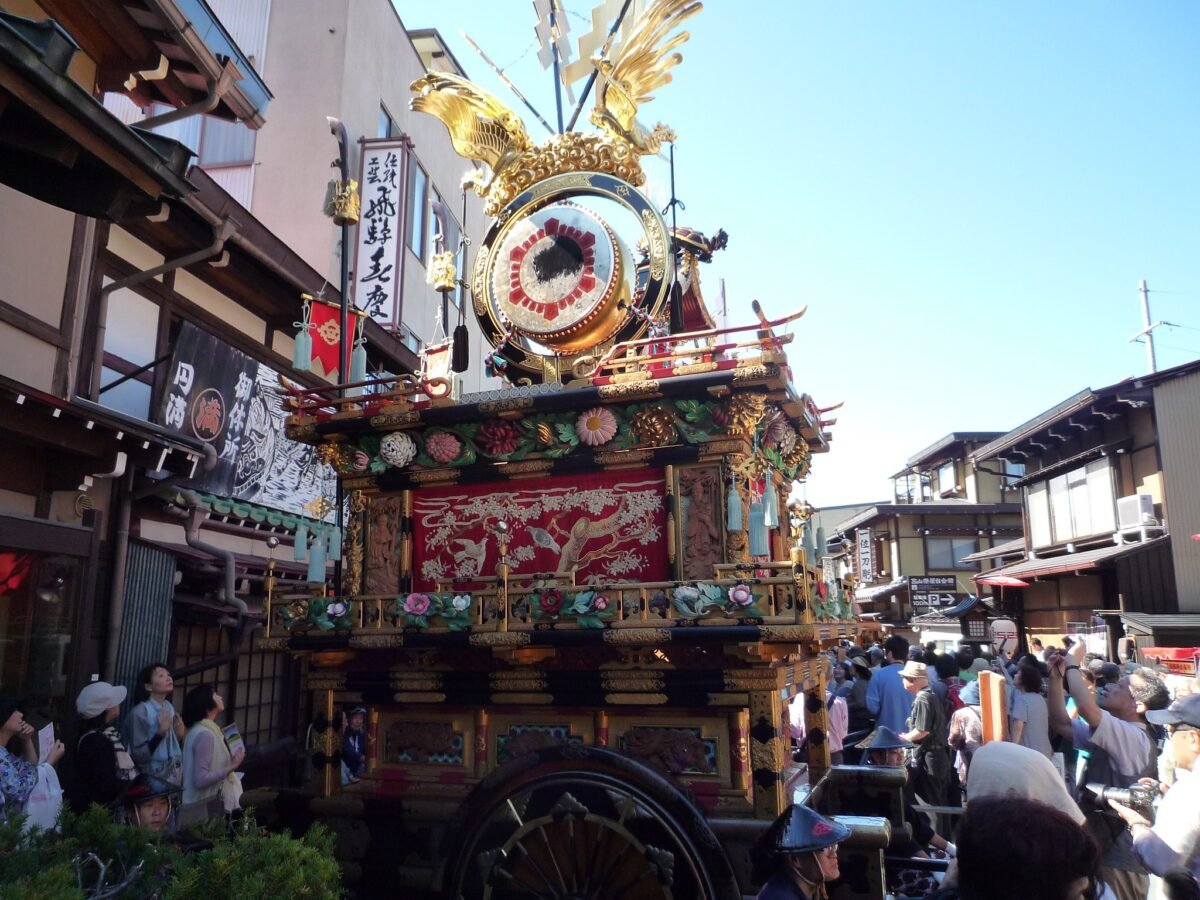
October brings a welcome dip in temperatures, with pleasant weather throughout most of the country. Expect temperatures between 14°C to 23°C, low rainfall, and plenty of sunshine. This is a fantastic month for hiking, and in the north of the country (Hokkaido, Nikko, and Nagano) the fall foliage is well underway!
There are some brilliant festivals and events this month, like the Hokkaido Food Festival (held in Yoyogi Park, Tokyo), the Tokyo Ramen Show, and of course, Halloween. Universal Studios and Disneyland Tokyo are both great for getting into the spooky spirit, but we recommend enjoying a Halloween dessert buffet at one of Tokyo’s top hotels.
If you’re not one for the outdoors or Halloween, October is a great time to visit the country’s top art museums and galleries. A lot of the biggest exhibitions start in October, so it’s a wonderful time for the arts.
Don’t miss out on: the Takayama festival, Tamagawa Fireworks Festival, and the Kochia Carnival.
November
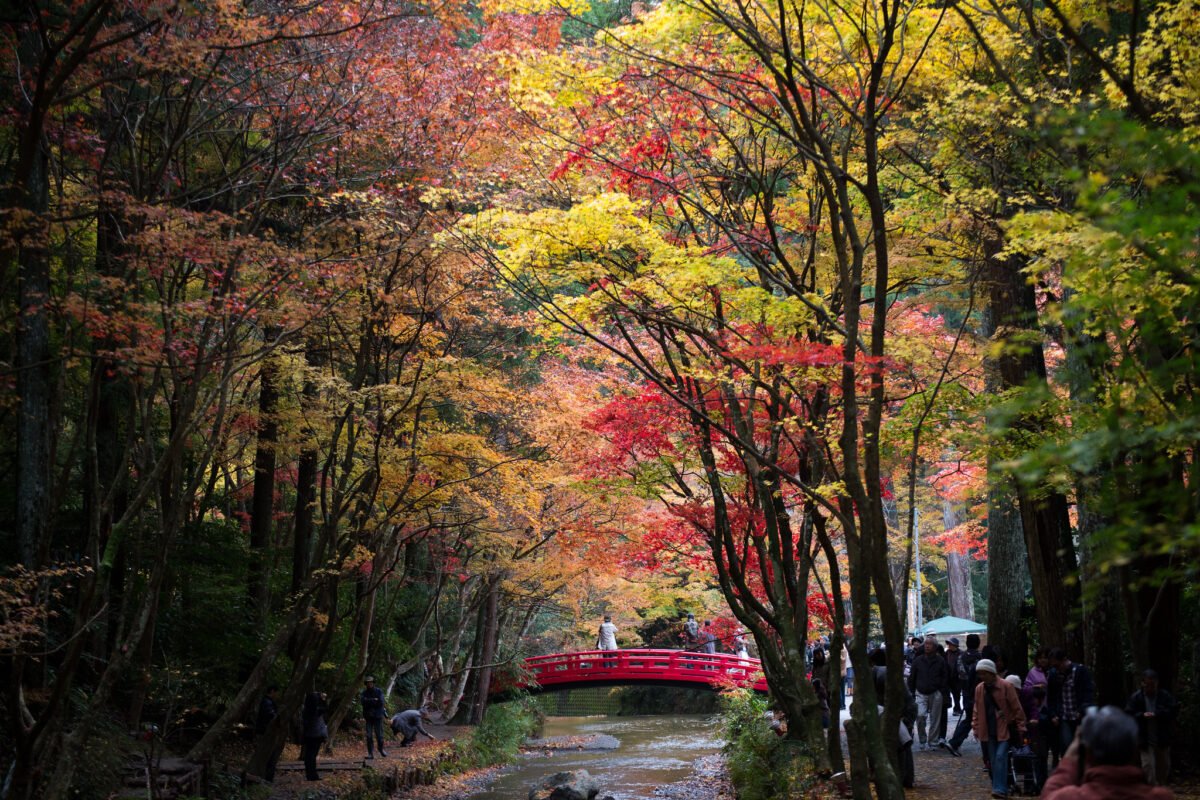
November is the best time to visit Japan if you’re looking to enjoy the autumn colours. By now, the days are crisp and fall foliage can be enjoyed from most of the major cities. Temperatures range from 7°C to 18°C, with low levels of rainfall.
Some of the best places to enjoy the vibrant autumn colours are Rikugien Garden in Tokyo, Kurube Gorge, Tokugen-in Temple in Shiga, and Tofkuji Temple in Kyoto. Since the temperatures are getting cooler, it’s also the perfect time to head to an onsen bath!
Must-sees in November are the Ginkgo Festival in Gaien Park and the beginning of the winter illuminations. We recommend the Ashikaga Flower Fantasy and the magnificent Kingdom of Lights.
Don’t miss out on: November Grand Sumo Tournament, and the Fuji Kawaguchiko Autumn Leaves Festival.
The shoulder season (June – July)
The shoulder seasons are a great time for budget travellers, as the rainy season in Japan typically lasts from early June to mid-July. Hotels tend to be a little cheaper, but since it doesn’t rain everyday, you’ll still be able to enjoy the beautiful outdoors!
June and July
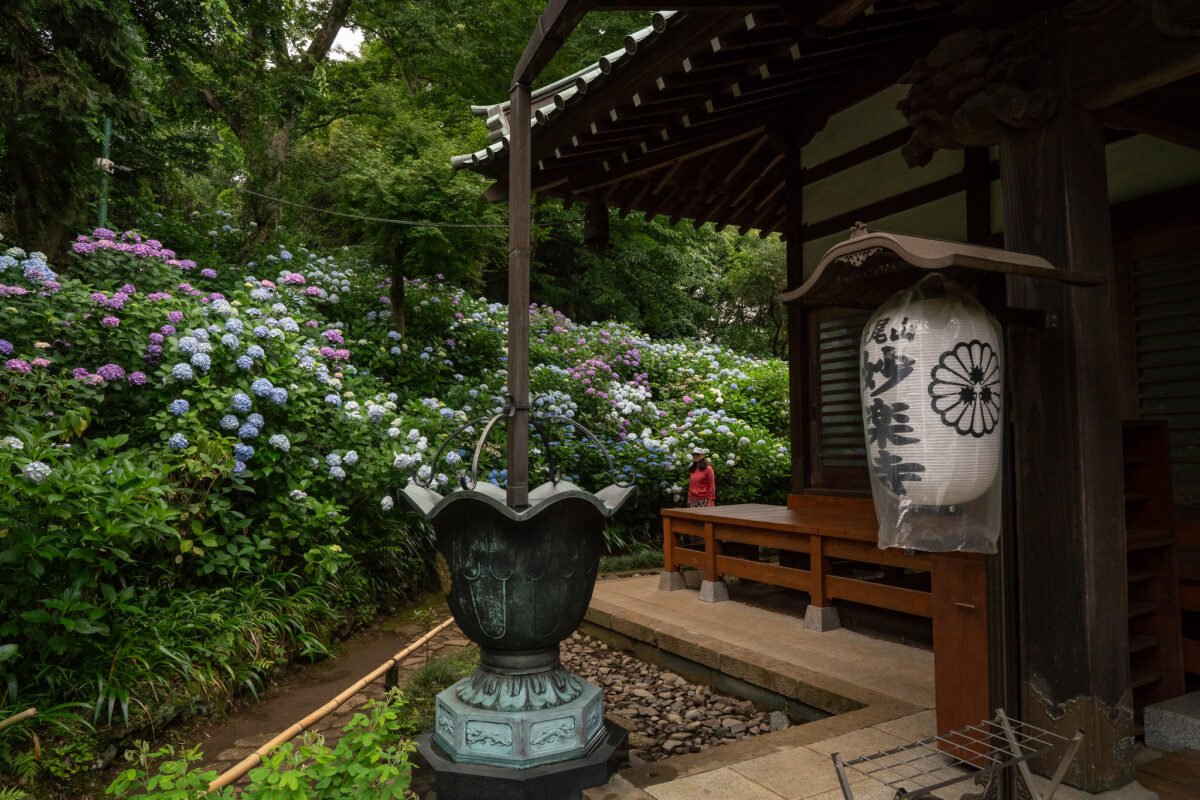
Although it’s the rainy season, June and July are a great time for outdoor enthusiasts. Temperatures are warm (between 20°C and 30°C), and many of the country’s highest peaks are now open (Mount Fuji opens in mid-July).
June and July are a great time to head to Okinawa for some much-needed beach time, or for something a little different, you can hit up a firefly festival. You’ll need to head out of the city to enjoy this phenomenon, and we recommend the Tatsuno Firefly Festival or the Tsukiyono Firefly Village.
Just like spring, summer in Japan is filled with flowers, and during June/July, you can expect to see hydrangeas, irises, and beautiful lotus flowers in bloom.
Don’t miss out on: Bunkyo Hydrangea Festival and seasonal summer foods (matcha dessert buffets, cold noodles, and shaved ice).
Low season (December – March)
The low season is a great time for budget travellers! With the exception of ski resorts and the holidays, it’s generally less crowded compared to other times of the year, and accommodation is cheaper. We love winter in Japan thanks to the powdery white snow and the insane New Year celebrations in Tokyo. However, many businesses close over the New Year (end of December to the beginning of January).
December

December is crisp and dry, with average temperatures of around 6°C and roughly three inches of rainfall (although this can vary across the country). It’s now officially cold, so warming up in an onsen bath is a must, and if you can afford it, the ski season kicks off in mid-December.
Christmas isn’t a big celebration in Japan, but you can enjoy the magical winter illuminations, and join in on the Japanese tradition of KFC on Christmas Day! From early December until mid-January, the Nankinmachi Lantern Festival is taking place in Kobe Chinatown, with over 400 Chinese Lanterns lighting up the sky.
For all you foodies out there, the Ramen Expo in Osaka takes place over the December weekends, with the top ramen shops in the country showcasing their take on this classic dish.
Don’t miss out on: NYE in Tokyo, Japanese Christmas Cake, and seasonal yuzu-flavoured foods.
January
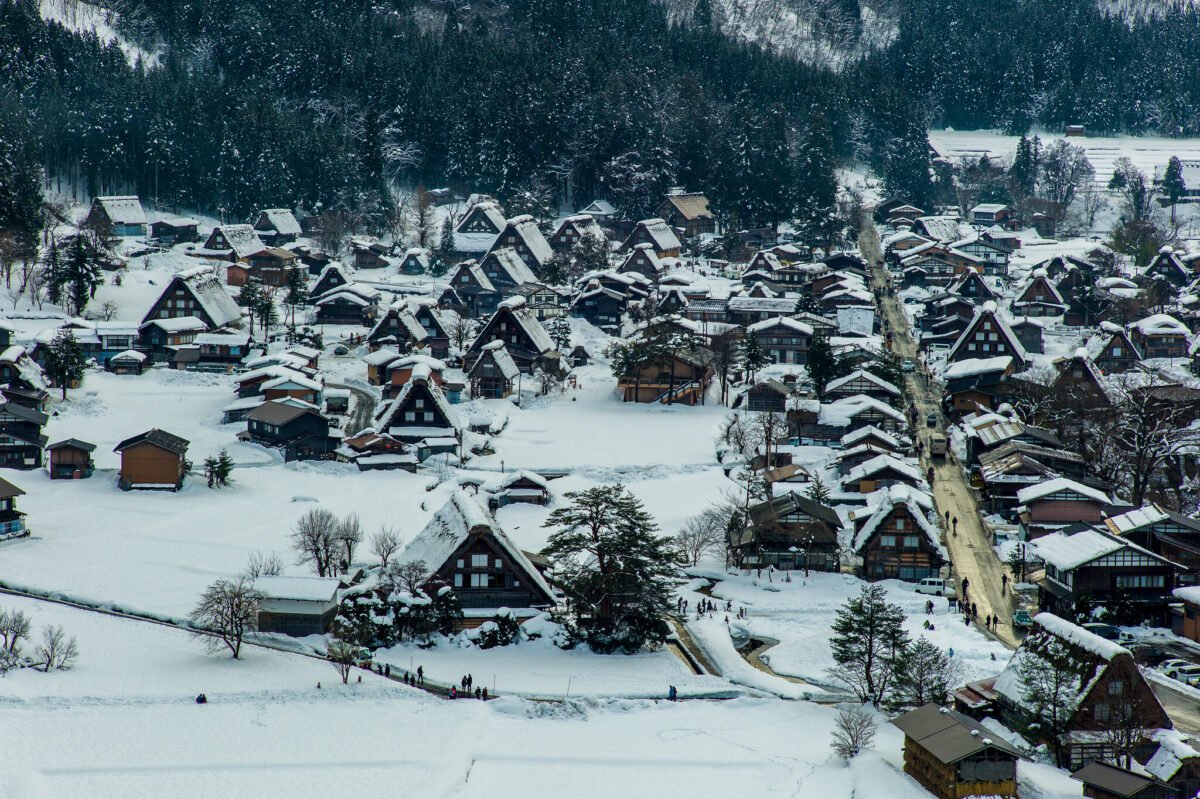
As New Year comes and goes, Japan’s ski season is firmly in swing, so if you’re a skier or snowboarder, January is one of the best times to visit! Make sure to soak your tired muscles in a hot onsen bath after a long day of hitting the slopes, and if you’re in Nagano, head to the Jigokudani Monkey Park to see the snow monkeys enjoying the hot springs. Average temperatures are around 5°C, or even colder in the north or at high altitudes, so wrap up warm!
Despite it being winter, it’s still possible to see flower fields in January, with the Tsumekizaki Narcissus Festival taking place from late December through to late January. There’s lots going on during the festival from taiko drumming to tasting local delicacies, but the highlight is the fields of roughly 3 million narcissus flowers.
For any scuba divers out there, January is the beginning of hammerhead season in Okinanwa and it’s well worth the trip to see the shoals of hammerhead sharks.
Don’t miss out on: January Grand Sumo Tournament, Shirakawa-go Village, and Japanese New Year celebrations in early January.
February and March

February and March are still fantastic months for skiers, and as temperatures warm up, the plum blossoms begin to emerge. Temperatures average around 6°C in February and 9°C in March (although it can be much colder in some areas!), so packing for the colder weather is a must.
During February there are several amazing festivals such as the Sapporo Snow Festival, the Yokote Kamakura Festival, and the Nagasaki Lantern Festival. The 450-year-old Yokote Kamakura Festival is spectacular, with hundreds of snow domes placed throughout the city, lit up from within.
March is also full of fun-filled festivals, like the Bunkyo Plum Festival, the Tsunan Snow Festival, and Anime Japan. It’s also possible to see early-blooming cherry blossoms in the south of the country!
Don’t miss out on: March Grand Sumo Tournament and the Jundauji Temple Daruma Doll Market.
Final thoughts
As you can see, there are plenty of reasons to visit Japan throughout the year, so the best time to visit really depends on you!
Let us know below if you have a favourite time to visit Japan and why, or if you’re jetting off to Japan soon, check out our Tokyo bucket list and the best time to visit Tokyo.




